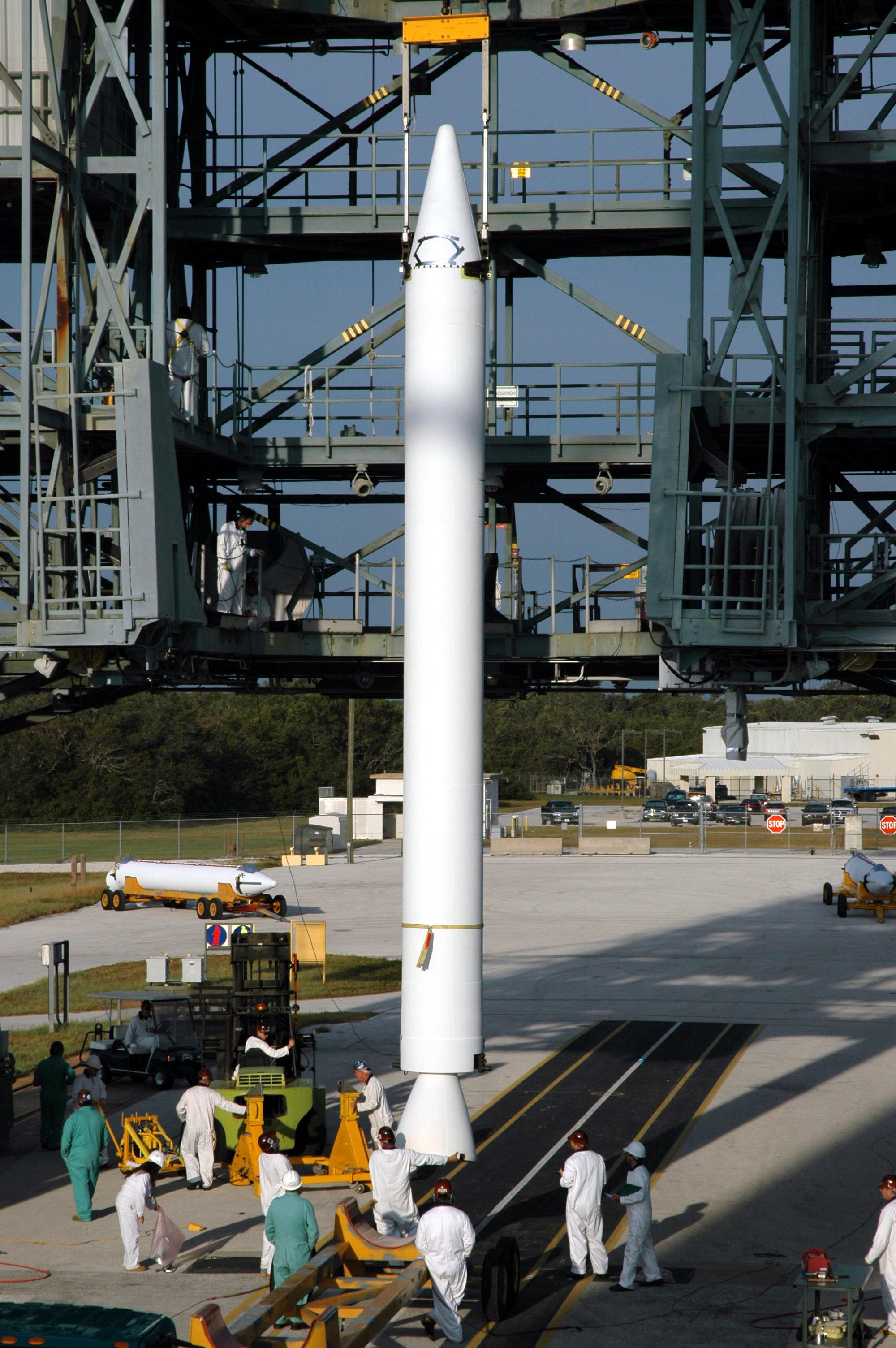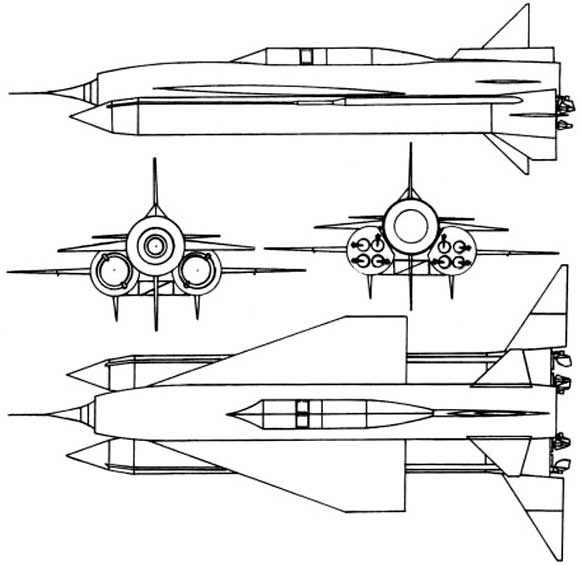|
Buran Cruise Missile
The Buran (, named for the Buran wind) cruise missile, designation M-40 (М-40) sometimes referred to as ''RSS-40'', was a Soviet intercontinental cruise missile by Myasishchev capable of carrying a 3,500 kg hydrogen bomb payload. The project was canceled before flight tests began. It is unrelated to the later Buran reusable orbiter. Development The project was authorized on 20 May 1954, parallel to the development of the Burya missile. The development however, began in April 1953 as a rocket-aircraft system by Myasishchev OKB with internal designation M-40. The project was canceled in November 1957, when two prototypes were just ready for flight testing, in favor of the R-7 Semyorka, since ICBMs were considered unstoppable. Like the Burya, the Buran consisted of two stages, the booster rockets designated M-41, and the cruise missile stage designated M-42. Specifications General characteristics *Function: Nuclear cruise missile *Launch mass: 125000 kg *Total length: ... [...More Info...] [...Related Items...] OR: [Wikipedia] [Google] [Baidu] |
M-40 Buran
M4 or M-4 most often refers to: * M4 carbine, an American carbine * M4 Sherman, an American World War II medium tank M4, M04, or M-4 may also refer to: Arts and entertainment * ''M4'' (EP), a 2006 EP by Faunts * ''M4'' (video game), a 1992 computer game developed for the Macintosh * ''M.IV'' ("Matrix IV"), the fictional Warner Brothers videogame project inside the 2021 film ''The Matrix Resurrections'' * Former name of band First to Eleven * M4, the robot assistant to the character Flint in the Star Trek episode Requiem for Methuselah Military Weapons * Benelli M4 Super 90, an Italian semi-automatic,gas-operated shotgun * M4 autocannon, an American 37 mm automatic gun * M4 Selectable Lightweight Attack Munition (SLAM), an American land mine * M4 SLBM, a French submarine-launched ballistic missile from 1985 * M4 Survival Rifle, an American rifle in aircraft survival gear * Spectre M4, an Italian submachine gun * M4 bayonet, an American World War II bayonet used ... [...More Info...] [...Related Items...] OR: [Wikipedia] [Google] [Baidu] |
R-7 Semyorka
The R-7 Semyorka (, GRAU index: 8K71) was a Soviet Union, Soviet missile developed during the Cold War, and the world's first intercontinental ballistic missile. The R-7 made 28 launches between 1957 and 1961. A derivative, the R-7A Semyorka, R-7A, was operational from 1960 to 1968. To the West it was unknown until its launch (later it would get the NATO reporting name SS-6 Sapwood). In modified form, it launched Sputnik 1, the first artificial satellite, into orbit, and became the basis for the R-7 (rocket family), R-7 family which includes Sputnik (rocket), Sputnik, Luna (rocket), Luna, Molniya (rocket), Molniya, Vostok (rocket family), Vostok, and Voskhod (rocket), Voskhod Expendable launch system, space launchers, as well as later Soyuz (rocket family), Soyuz variants. Various modifications are still in use and it has become the world's most reliable space launcher. Description The R-7 was long, in diameter and weighed ; it had a single stage with four strap on boosters p ... [...More Info...] [...Related Items...] OR: [Wikipedia] [Google] [Baidu] |
SM-62 Snark
The Northrop SM-62 Snark is an early-model intercontinental range ground-launched cruise missile that could carry a W39 thermonuclear warhead. Though the Snark was in training by the United States Air Force's Strategic Air Command from 1958 through 1961, it was only deployed as an operational missile for less than a year during 1961. It represented an important step in weapons technology during the Cold War. The Snark was named by Jack Northrop and took its name from the author Lewis Carroll's character the "snark".‘’From Snark to Peacekeeper. Office of the Historian, Strategic Air Command, Offutt Air Force Base, Nebraska (1990). The Snark was the only surface-to-surface cruise missile with such a long range that was ever deployed by the U.S. Air Force. Following the deployment of ICBMs, the Snark was rendered obsolete, and it was removed from deployment in 1961. Design and development Project Mastiff, to create a missile for delivery for an atom bomb began immediately af ... [...More Info...] [...Related Items...] OR: [Wikipedia] [Google] [Baidu] |
Nuclear Fusion
Nuclear fusion is a nuclear reaction, reaction in which two or more atomic nuclei combine to form a larger nuclei, nuclei/neutrons, neutron by-products. The difference in mass between the reactants and products is manifested as either the release or absorption (electromagnetic radiation), absorption of energy. This difference in mass arises as a result of the difference in nuclear binding energy between the atomic nuclei before and after the fusion reaction. Nuclear fusion is the process that powers all active stars, via many Stellar nucleosynthesis, reaction pathways. Fusion processes require an extremely large Lawson criterion, triple product of temperature, density, and confinement time. These conditions occur only in Stellar core, stellar cores, advanced Nuclear weapon design, nuclear weapons, and are approached in List of fusion experiments, fusion power experiments. A nuclear fusion process that produces atomic nuclei lighter than nickel-62 is generally exothermic, due t ... [...More Info...] [...Related Items...] OR: [Wikipedia] [Google] [Baidu] |
Kerosene
Kerosene, or paraffin, is a combustibility, combustible hydrocarbon liquid which is derived from petroleum. It is widely used as a fuel in Aviation fuel, aviation as well as households. Its name derives from the Greek (''kērós'') meaning "wax"; it was registered as a trademark by Nova Scotian, Nova Scotia geologist and inventor Abraham Pineo Gesner, Abraham Gesner in 1854 before evolving into a generic trademark. It is sometimes spelled kerosine in scientific and industrial usage. Kerosene is widely used to power jet engines of aircraft (jet fuel), as well as some rocket engines in a highly refined form called RP-1. It is also commonly used as a cooking and lighting fuel, and for fire toys such as Poi (performance art)#Fire poi, poi. In parts of Asia, kerosene is sometimes used as fuel for small outboard motors or even motorcycles. World total kerosene consumption for all purposes is equivalent to about 5,500,000 barrels per day as of July 2023. The term "kerosene" is comm ... [...More Info...] [...Related Items...] OR: [Wikipedia] [Google] [Baidu] |
Liquid Oxygen
Liquid oxygen, sometimes abbreviated as LOX or LOXygen, is a clear cyan liquid form of dioxygen . It was used as the oxidizer in the first liquid-fueled rocket invented in 1926 by Robert H. Goddard, an application which is ongoing. Physical properties Liquid oxygen has a clear cyan color and is strongly paramagnetic: it can be suspended between the poles of a powerful horseshoe magnet. Liquid oxygen has a density of , slightly denser than liquid water, and is cryogenic with a freezing point of and a boiling point of at . Liquid oxygen has an expansion ratio of 1:861 and because of this, it is used in some commercial and military aircraft as a transportable source of breathing oxygen. Because of its cryogenic nature, liquid oxygen can cause the materials it touches to become extremely brittle. Liquid oxygen is also a very powerful oxidizing agent: organic materials will burn rapidly and energetically in liquid oxygen. Further, if soaked in liquid oxygen, some materials su ... [...More Info...] [...Related Items...] OR: [Wikipedia] [Google] [Baidu] |
Booster Rocket
A booster is a rocket (or rocket engine) used either in the first stage of a multistage rocket, multistage launch vehicle or in parallel with longer-burning sustainer engine, sustainer rockets to augment the space vehicle's takeoff thrust and payload capability. Boosters are traditionally necessary to launch spacecraft into low Earth orbit (absent a single-stage-to-orbit design), and are especially important for a space vehicle to go beyond Earth orbit. The booster is dropped to fall back to Earth once its fuel is expended, a point known as ''booster engine cut-off'' (BECO). Following separation event, booster separation, the rest of the launch vehicle continues flight with its core or upper-stage engines. The booster may be recovered, refurbished and reused, as was the case of the steel casings used for the Space Shuttle Space Shuttle Solid Rocket Booster, Solid Rocket Boosters. Drop-away engines The SM-65 Atlas rocket used three engines, one of which was fixed to the fuel tan ... [...More Info...] [...Related Items...] OR: [Wikipedia] [Google] [Baidu] |
ICBM
An intercontinental ballistic missile (ICBM) is a ballistic missile with a range (aeronautics), range greater than , primarily designed for nuclear weapons delivery (delivering one or more Thermonuclear weapon, thermonuclear warheads). Conventional weapon, Conventional, Chemical weapon, chemical, and Biological agent, biological weapons can also be delivered with varying effectiveness, but have never been deployed on ICBMs. Most modern designs support multiple independently targetable reentry vehicle (MIRVs), allowing a single missile to carry several warheads, each of which can strike a different target. The Nuclear weapons of the United States, United States, Russia and weapons of mass destruction, Russia, China and weapons of mass destruction, China, France and weapons of mass destruction, France, India and weapons of mass destruction, India, the United Kingdom and weapons of mass destruction, United Kingdom, Nuclear weapons and Israel, Israel, and North Korea and weapons of ... [...More Info...] [...Related Items...] OR: [Wikipedia] [Google] [Baidu] |
Burya
The ''Burya'' ("Storm" in Russian; ) was a supersonic, intercontinental cruise missile, developed by the Lavochkin design bureau (chief designer Naum Semyonovich Chernyakov) under designation La-350 () from 1954 until the program cancellation in February 1960. The request for proposal issued by the Soviet government in 1954, called for a cruise missile capable of delivering a nuclear payload to the United States. Analogous developments in the United States were the SM-62 Snark and SM-64 Navaho cruise missiles, particularly the latter, which used parallel technology and had similar performance goals. Development The first steps towards development of Burya was the idea of Mstislav Vsevolodovich Keldysh of Keldysh bomber. The Burya was planned as a Mach 3 intercontinental nuclear ramjet cruise missile. The Burya was remarkably advanced for its time, and despite setbacks and several crashes, the vehicle demonstrated a range in excess of 6,000 km with a thermonuclear (hydr ... [...More Info...] [...Related Items...] OR: [Wikipedia] [Google] [Baidu] |
Buran Wind
The buran (, ) is a wind which blows across Iran, eastern Asia, specifically Xinjiang, Siberia, and Kazakhstan. Over the tundra, it is also known as , purga. It is a wind of cold air, sometimes very strong, characteristic of the steppes of the Sarmatic Plain, to the west of the Urals. The buran takes two forms: in summer, it is a hot, dry wind, whipping up sandstorms; in winter, it is bitterly cold and often accompanied by blizzards. Winter buran winds are strong and full of ice and snow. The sky is often laden with snow, which swirls about and reduces the visibility to near zero at times. In Alaska this severe northeasterly wind is known as ''burga'' and brings snow and ice pellets. The Soviet space programme named a class of spacecraft after the buran (see Buran programme). See also *Dust storm * N'aschi *Shamal (wind) A shamal (, 'north') is a northwesterly wind blowing over Iraq and the Persian Gulf states (including Saudi Arabia and Kuwait), often strong during the day, ... [...More Info...] [...Related Items...] OR: [Wikipedia] [Google] [Baidu] |
Orbiter
A spacecraft is a vehicle that is designed to fly and operate in outer space. Spacecraft are used for a variety of purposes, including communications, Earth observation, meteorology, navigation, space colonization, planetary exploration, and transportation of humans and cargo. All spacecraft except single-stage-to-orbit vehicles cannot get into space on their own, and require a launch vehicle (carrier rocket). On a sub-orbital spaceflight, a space vehicle enters space and then returns to the surface without having gained sufficient energy or velocity to make a full Earth orbit. For orbital spaceflights, spacecraft enter closed orbits around the Earth or around other celestial bodies. Spacecraft used for human spaceflight carry people on board as crew or passengers from start or on orbit (space stations) only, whereas those used for robotic space missions operate either autonomously or telerobotically. Robotic spacecraft used to support scientific research are space ... [...More Info...] [...Related Items...] OR: [Wikipedia] [Google] [Baidu] |
Buran (spacecraft)
''Buran'' (, , ; GRAU index serial number: 11F35 1K, construction number: 1.01) was the first spaceplane to be produced as part of the Soviet/Russian Buran programme, Buran program. The Buran orbiters were similar in design to the Space Shuttle, U.S. Space Shuttle. Buran completed one uncrewed spaceflight in 1988, and was destroyed in 2002 due to the collapse of its storage hangar. The Buran-class orbiters used the Expendable launch system, expendable Energia (rocket), Energia rocket, a class of super heavy-lift launch vehicle. Besides describing the first operational Soviet/Russian shuttle orbiter, "Buran" was also the designation for the entire Soviet/Russian spaceplane project and its flight articles, which were known as "Buran-class orbiters". Construction The construction of the Buran spacecraft began in 1980, and by 1984 the first full-scale orbiter was rolled out. Over 1,000 companies all over the Soviet Union were involved in construction and development. The Buran s ... [...More Info...] [...Related Items...] OR: [Wikipedia] [Google] [Baidu] |










